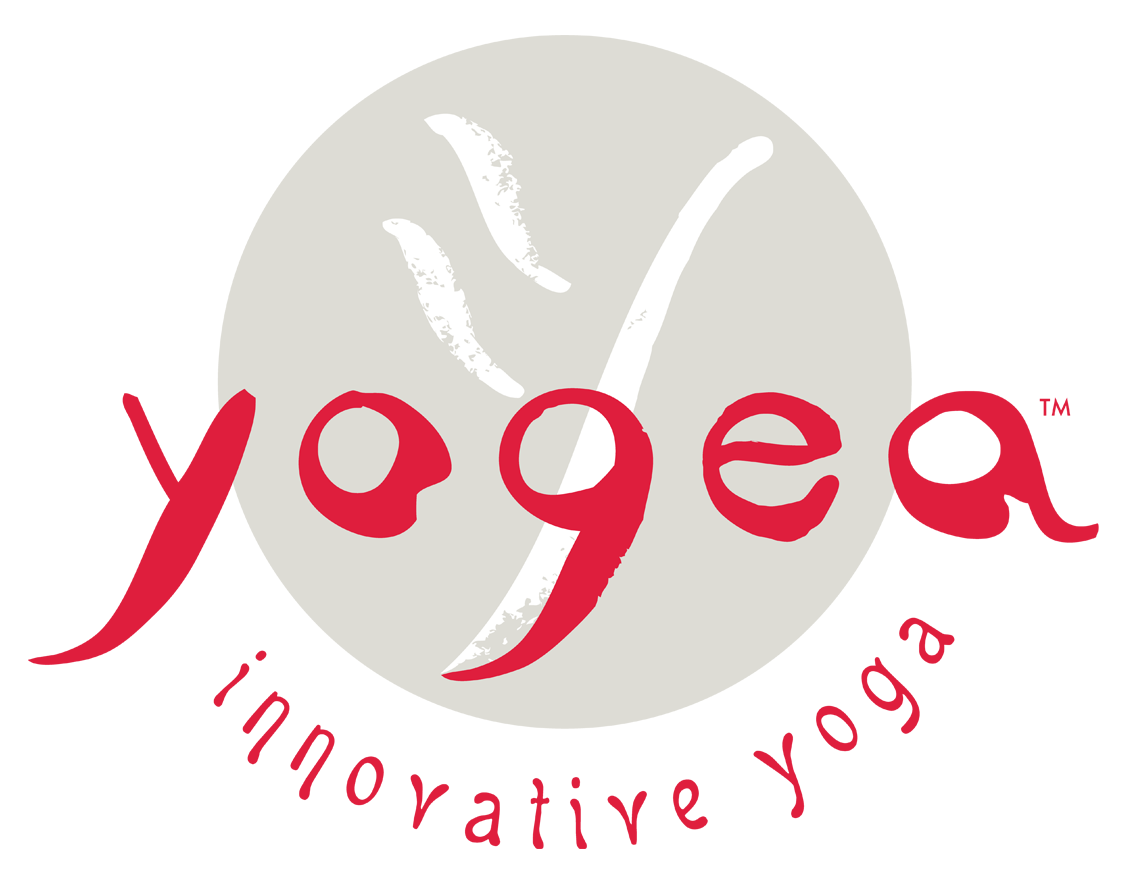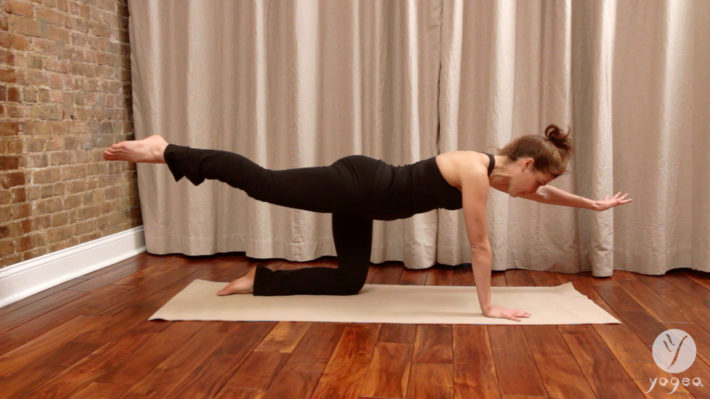Welcome to the Elephant Series of Yogea Asana Lab. This section will feature four elephantine variations: Elephant’s Trunk Pose (Eka Hasta Bhujasana); Extended Lateral Elephant (Utthitha Eka Hasta Bhujasana); Elephant Bind (Badha Eka Hasta Bhujasana) and Bound Elephant Twist (Badha Parvritta Eka Hasta Bhujasana).
The first pose is a warm-up favorite tossed as an appetizer in most routines. It is important to start from all fours, carefully aligning your hips over the knees and the shoulders over the wrists. As you pull out of the wrists and you press through the tops of the feet, you next extend the opposite arm and leg forward and back until you find a table-top position with your spine. It is vital to use the core, and press evenly through the balancing foot and arm, as you make the extended arm and leg a continuation of the torso and spine. You could bring the knee to the elbow as you bend the joints and re-expand back to Elephant trunk pose, or simply hold the pose for 4-5 breaths until your fire up the core and you reach forward the back with your foot and hand into an oppositional pull. It is advisable not to adjust the arm and knee or top of the foot as you lift the other limbs. The body wants to do this micro-action intuitively, but the limbs come out of alignment with the torso and the effect is sort of lost. This pose is ideal for the beginning of the session after you do a round of cats and cows, and you are ready to warm up. Elephant teaches you to engage the core from the get-go, and to find postural alignment through oppositional pull.
The second pose is less practiced and is part of the innovative Yogea variations of Elephant trunk. Once you have extended the arm and the leg forward and back in one straight line, you maintain the strong core as you simply shift the front arm and back leg to the side to form a table top and align into a single lateral platform. It is harder to get the leg and arm on the same level unless you don’t use your core effectively, so it is advisable to move the arm and leg simultaneously from the belt line and to avoid lifting them separately. This variation is much harder to balance and hold, but very strengthening if you manage to elevate the arm and leg evenly. To come out of it, you could either drop one foot and arm, or both sides and shift the weight to the arm to left the leg and carry it into a front lunge. Or you could go for a deep hamstring stretch and simply curl the back foot under, realign the hands into a down dog placement, and carry the extended leg to the side as you flex the foot and press up and back in a side-lunged down dog. Or you could simply drop the leg to the side and ground the opposite arm aligning it with the shoulders so you can take a kneeling twist. This pose is perfect for the warm up series, especially when you are targeting the toning of the abdominals and the working out of the core. The pose stimulates digestion and cultivates balance in motion.
The third pose builds on the first classical elephant and urges you to bind the opposite top of the foot and hand gently twisting and clasping from behind. It comes in two variations. One asks you to take your bind and shift the hips back as you gaze forward, arch your spine, flex the back foot and take a kneeling bound variation of Natarajasana (Dancer’s pose). As you arch deeper you can open the shoulder more and increase the backbend. It is very important to keep the shoulders even in one line and to widen across the color bone, pulling up from the grounded writs. Always keep in mind to micro-bend the elbow so you are not hyper-extending it, and to press firmly through the top of the back foot in order to maintain a strong balance. The hips are ideally squared and so are the shoulders, and the backbend comes from the thoracic and not from the lumbar spine. This pose opens the hips, psoas, groins, spine and shoulders and could be practiced either in the warm-up series if you are aiming for an advanced routine, or as a transitional pose in the middle of the sequence.


Leave a Reply